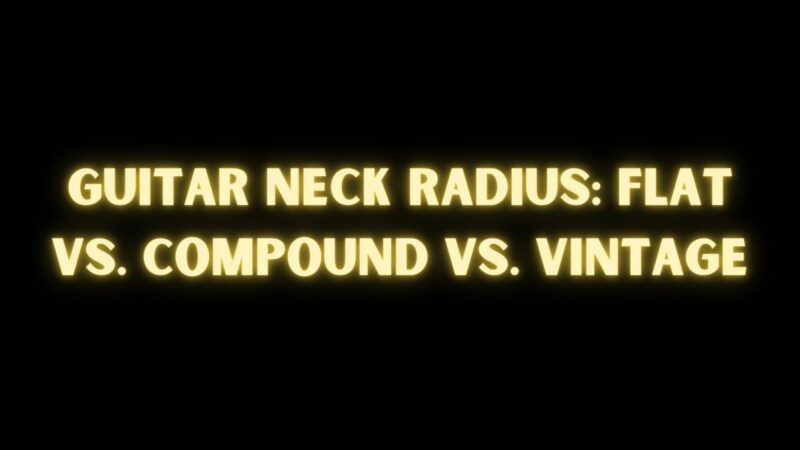One of the critical aspects that define the playability and feel of a guitar is its neck radius. The neck radius refers to the curvature of the fingerboard, specifically how flat or rounded it is. Different neck radii cater to various playing styles and preferences. In this article, we’ll explore three common neck radius profiles: Flat, Compound, and Vintage, and discuss their characteristics, advantages, and the types of players who gravitate toward each.
1. Flat Neck Radius: Modern Precision
Characteristics: A flat neck radius typically features a consistent curvature along the entire length of the fingerboard. Common flat radii range from 12 inches to 20 inches, with some extreme cases going even flatter.
Advantages:
- Fast Lead Playing: The flat profile allows for easy string bending and precise control over note articulation. This makes it a favorite among players who focus on lead guitar work, such as shredders and soloists.
- Low Action: A flatter radius often permits lower action, meaning the strings can be set closer to the frets without buzzing. This makes it easier to execute fast, intricate fretwork.
- Modern Feel: Many contemporary guitar designs, especially those geared toward rock and metal genres, feature flat neck radii. These guitars offer a sleek, modern feel that appeals to players seeking speed and accuracy.
2. Compound Neck Radius: Best of Both Worlds
Characteristics: The compound neck radius combines two different radii along the length of the fingerboard. Typically, it starts with a rounded, vintage-style radius at the nut (around 7.25 to 9.5 inches) and gradually flattens out as you move up the neck (12 to 16 inches or more).
Advantages:
- Versatility: The compound radius offers the best of both worlds. Players can enjoy the comfort and ease of chording at the lower frets, and then transition smoothly to flatter regions for lead playing and bending higher up the neck.
- Wide Range of Styles: Guitarists who perform in various styles within a single set or session often prefer compound necks. It adapts to different playing techniques and musical genres seamlessly.
- Smooth Transition: The gradual change in radius provides a natural and comfortable feel for the hand as it moves up the neck. This is particularly useful for guitarists who frequently switch between rhythm and lead playing.
3. Vintage Neck Radius: Nostalgic Warmth
Characteristics: Vintage neck radii are usually more rounded, replicating the fingerboard profiles found on classic guitars from the mid-20th century. Radii commonly range from 7.25 inches to 9.5 inches.
Advantages:
- Classic Feel: Vintage necks deliver a warm, familiar feel that harks back to the golden era of guitar playing. They offer a sense of nostalgia and evoke the tones of classic rock, blues, and jazz.
- Chording Comfort: The rounded radius near the nut makes it comfortable for chording and rhythm playing. This is why vintage-style necks are often preferred by rhythm guitarists and blues players.
- Timeless Aesthetics: Vintage necks not only feel vintage but also look the part. They match the aesthetics of classic guitars, making them appealing to those who appreciate the instrument’s heritage.
Choosing the Right Neck Radius
Selecting the right neck radius ultimately depends on your playing style, musical preferences, and comfort. Each radius profile offers a unique playing experience, and there is no one-size-fits-all answer. Whether you prefer the modern precision of a flat radius, the versatility of a compound radius, or the nostalgic warmth of a vintage radius, there’s a guitar neck out there that will perfectly complement your playing style and musical journey.


